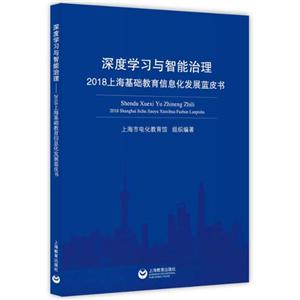以认知理论进行汉语连动式结构的研究

|
以认知理论进行汉语连动式结构的研究作者:印辉 开 本:大32开 书号ISBN:9787561545270 定价:26.0 出版时间:2012-12-01 出版社:厦门大学出版社 |
以认知理论进行汉语连动式结构的研究 本书特色
《以认知理论进行汉语连动式结构的研究》旨在解决汉语语言学的一个长期存在的问题,即如何分类和理解svc(汉语连动式结构)。作者对svc的分类是基于三形象语义原则:时间序列和范围,共享参与者,和情境依赖。
以认知理论进行汉语连动式结构的研究 目录
chapter 1 introductionchapter 2 past treatments of serial verb constructions 2.1 past approaches to svcs 2.1.1 christaller (1875) 2.1.2 westermann (1930) 2.1.3 stewart ( 1963 ) 2.1.4 bamgbose (1974) 2.1.5 baker (1989) 2.1.6 agbedor (1994) 2.1.7 aikhenvald ( 2006 ) 2.2 past approaches to chinese svcs 2.2.1 chao (1968) 2.2.2 li and thompson ( 1981 ) 2.2.3 dai (1990) 2.2.4 paul (2004) 2.3 discussionchapter 3 basic tenets of cognitive grammar 3.1 assumptions of cognitive grammar 3.2 symbolization 3.3 construction and composition 3.4 base vs.profile 3.5 construal 3.6 perspective 3.7 action chain 3.8 lexicon and syntax 3.9 schematic representation of a transitive eventchapter 4 the present analysis 4.1 three iconically based semantic principles 4.1.1 principle of temporal sequence and scope 4.1.2 principle of shared participants 4.1.3 principle of situational dependence 4.2 conceptual event 4.3 laying out the event conflation continuum 4.4 event structure of coordination, subordination, and svcs 4.5 morphosyntactic and prosodic tests of event conflation chapter 5 the five constructions and the seven tests 5.1 coordinate constructions 5.1.1 schematic representation 5.1.2 application of tests 5.1.3 discussion 5.2 complement constructions 5.2.1 schematic representation 5.2.2 application of tests 5.2.3 discussion 5.3 purposive constructions 5.3.1 purposive complements or separate clauses 5.3.2 the three principles reflected in purposive svcs 5.3.3 schematic representation 5.3.4 application of the tests 5.3.5 discussion 5.4 double-headed or shared object constructions 5.4.1 the three principles reflected in double-headedconstructions 5.4.2 schematic representation 5.4.3 application of tests 5.4.4 discussion 5.5 the so-called vv compounds--a continuum between lexicon andsyntax 5.5.1 parallel vv compounds 5.5.2 phase vv compounds 5.5.3 resultative vv compounds 5.5.4 directional vv compounds 5.6 vv compounds as svcs 5.6.1 svcs with complements of result 5.6.2 svcs with complements of direction 5.6.3 schematic representation 5.6.4 application of tests 5.7 discussionchapter 6 coverb constructions 6.1 traditional criteria 6.2 problematic criteria 6.3 verbhood tests 6.4 present analysis 6.4.1 coverbs--a continuum 6.4.2 entities undergoing process 6.5 metaphorical and functional extensions 6.5.1 na 'take' ——instrumental and topic marker 6.5.2 ba——object marker 6.5.3 gel (give) ——recipient marker and benefactive use 6.6 differences between svcs and covcschapter 7 psycholinguistic experiments 7.1 experiment one 7.2 experiment twochapter 8 the association of multi-verb constructions with verbs 8.1 coordinate construction 8.2 complement construction 8.3 purposive construction 8.4 shared object construction 8.5 compound construction 8.5.1 contiguous compounds containing lai ' come' and qu ' go' 8.5.2 contiguous compounds containing motion verbs other thanlai and quchapter 9 conclusionsbibliography

社会科学 社会科学类教材 语言文字
在线阅读
- 最新内容
- 相关内容
- 网友推荐
- 图文推荐
上一篇:贫困村灾后重建案例报告选集-(上)
下一篇:教师成长那些事
零零教育社区:论坛热帖子
| [高考] 2022 西安电子科技大学《软件工程》大作业答案 (2022-04-25) |
| [家长教育] 孩子为什么会和父母感情疏离? (2019-07-14) |
| [教师分享] 给远方姐姐的一封信 (2018-11-07) |
| [教师分享] 伸缩门 (2018-11-07) |
| [教师分享] 回家乡 (2018-11-07) |
| [教师分享] 是风味也是人间 (2018-11-07) |
| [教师分享] 一句格言的启示 (2018-11-07) |
| [教师分享] 无规矩不成方圆 (2018-11-07) |
| [教师分享] 第十届全国教育名家论坛有感(二) (2018-11-07) |
| [教师分享] 贪玩的小狗 (2018-11-07) |






